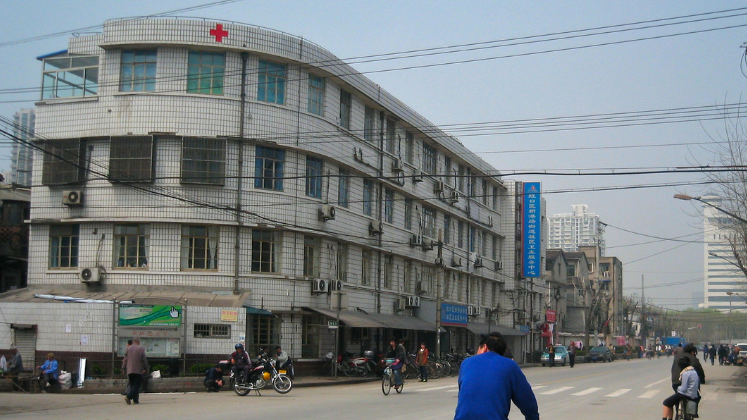In Social Protection under Authoritarianism: Health Politics and Policy in China, Xian Huang explores patterns of welfare under an authoritarian system, examining the rapid growth in health insurance in China in the first decade of the twenty-first century. This valuable book throws light on how authoritarian states use social protection to further economic development and regime stability, finds Mel Cousins, and will form a sound basis for future studies in this important policy area.
Social Protection under Authoritarianism: Health Politics and Policy in China. Xian Huang. Oxford University Press. 2020.
 Find this book (affiliate link):
Find this book (affiliate link): ![]()
Professor Xian Huang highlights the important role of social policy in an authoritarian society in her compelling book, Social Protection under Authoritarianism. In particular, she examines the rapid growth of health insurance in China in the Hu-Wen decade (2003-2012). In only a few years, coverage increased from less than one-fifth of the population in 2000 to 90 per cent having some form of health insurance by 2011. As the author points out, much welfare theorising has been set in the context of democratic societies and some have assumed (or asserted) that democracy is a precondition for expanded social protection. But, like a growing number of recent books and theses on the Chinese welfare state, Huang explores the patterns of welfare in an authoritarian society: ‘who gets what, when and how’ (51).
Huang describes the introduction and expansion of health insurance in China. She argues that it was originally introduced largely to support reform of state-owned entreprises (SoEs) (and to prevent social unrest). However, it was then expanded (including to the rural population) to improve risk-pooling (that is, to bring in more funds) and in response to the medical needs of the population, highlighted by the SARS epidemic in 2003. But Huang also shows that coverage was highly stratified with a range of different health insurance schemes for different groups (public servants, urban workers, rural workers).

Image Credit: ‘Shanghai: HongKou Hospital, April 2008’ by Paul Kretek licensed under CC BY 2.0
Huang argues that in expanding health insurance, China has aimed both to retain the privileges of elite groups such as public servants and to reach out to more marginalised groups such as rural migrant workers as part of a general strategy to maintain regime stability. However, the level of reimbursement for core urban employees was significantly higher than that available to those newly covered such as rural workers. So China has developed ‘an expansive yet stratified’ welfare system. And these plans are implemented at a local level by leaders with significant autonomy so the precise shape of the local system is, Huang argues, driven by local political economies.
Therefore, as with other policy areas such as pensions or social assistance, there has been a very high level of regional policy variation. Huang examines regional patterns of health insurance based on generosity (average benefits received) and coverage (the percentage who receive benefits), and she identifies four distinct clusters of provision ranging from a general and inclusive approach to a strict and exclusive one. She argues that these represent different local policy choices, reflecting political economy conditions, in particular social risk and fiscal capacity.
Below: Reviewer’s table based on analysis in Chapter Six of Social Protection under Authoritarianism by Xian Huang. Oxford University Press. 2020.
| Cluster | Description | Outcome | Related factors |
|---|---|---|---|
| 1. Dual | Coastal provinces | High coverage, above average benefits | High fiscal capacity, high in-migration |
| 2. Privileging | (a) Large cities and (b) ethnic minority provinces | High coverage, low benefits | (a) High fiscal capacity, high in-migration; large elite groups (b) High minority population; high central subsidies, limited labour mobility |
| 3. Status quo | North-east and south-west | Low coverage, low benefits | Less developed economy, low labour mobility |
| 4. Risk-pooling | Central | High coverage, low benefits | Out-migration, low fiscal capacity |
As set out in the table above, Huang argues that these patterns correspond to key differences in regional economies (143), though she accepts that this cannot fully explain the clusters and notes that within each cluster there are significant variations in economic level. This is particularly marked in Group 2. Huang suggest that political factors such as a desire to prioritise elite groups in Beijing and Tianjin or ethnic minorities in provinces such as Xinjiang or Qinghai must also be taken into account.
Regression analysis supports Huang’s proposed links between coverage and social risk (labour mobility and levels of dependency), and generosity and fiscal capacity. Unsurprisingly GDP per capita is also positively related to coverage. But, in contrast to other studies such as Ke Meng (2019), Huang finds that provincial leaders’ level of ambition is not related to expanded health insurance, suggesting that trajectories are shaped by socioeconomic factors rather than political ambition. Huang argues that, because of the stratified structure of health insurance, the dramatic expansion in cover has reinforced, rather than reduced, health inequalities (Chapter Seven).
The book again highlights the problem of getting reliable and comparable data in a Chinese context. Even where the data is available, the author shows how local government manipulates policies and data to ‘achieve’ central government targets: for example, by excluding certain hospitals or types of service in the calculation of the reimbursement rate for health services in order to get the ‘right’ result (and, in one case, just making up reimbursement bills and receipts). Huang also shows how some provinces require people to insure in two schemes to boost coverage data.
In this book, the operationalisation of ‘generosity’ as spending per capita is perhaps questionable, particularly in the area of health where the money goes not to the claimant but to the medical system. So a ‘generous’ province might be an inefficient one with high medical costs and poor services. The focus on the province (a common one in Chinese studies for data reasons) is also probably oversimplistic.
It may be that such data issues explain why Huang’s categorisation differs from other studies, such as by Jing Lin (2017) and Yang Luo (2019), which focus on pensions and social insurance, or by Kerry Ratigan (2017), which looks at broader social policies. In fact, the picture of the three large city states (Beijing, Shanghai and Tianjin) as having high benefits but low coverage is the opposite to what one finds in looking at pensions. Of course, different social protection policies might conceivably cluster in different patterns. But the logic driving Huang’s analysis of social risk and fiscal capacity might be expected to lead to similar patterns for health insurance and pensions.
A picture of an omniscient central government manipulating welfare to achieve support is perhaps too reductive (in fairness, the author accepts that ‘social demands’ are also a relevant factor but does not explore this issue in detail). No doubt this is what the government tries to do and, as Yan Wang (2020) shows, it attempts to create public discourse in line with its objectives. But the government must also respond to public concerns if it is to maintain its legitimacy, as shown by its reluctance to address the issue of the low pension age.
This is a very interesting study even if it perhaps raises as many questions as it can definitively answer. This is no criticism of a work which forms part of what might be described as the ‘first wave’ of analytical studies of the Chinese social protection system and which is forced to rely on limited and perhaps unreliable data. Huang’s work will form a sound basis for future studies in this important policy area and also throws light on how authoritarian states more generally use social protection to further both economic development and regime stability (see 199-202).
Note: This review gives the views of the author, and not the position of the LSE Review of Books blog, or of the London School of Economics and Political Science. The LSE RB blog may receive a small commission if you choose to make a purchase through the above Amazon affiliate link. This is entirely independent of the coverage of the book on LSE Review of Books.






